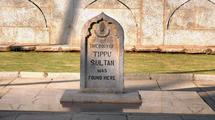Why Tipu Sultan must be killed, again
In Karnataka, the province of the historian has shrunk, yielding place to others who now adjudicate historical truth and diminish scholarship
‘Unlike his portrayal in England, Tipu’s afterlife in India has been more mixed’ | Photo Credit: De Agostini via Getty Images
Tipu Sultan was feared and envied not just during his reign (1782-99) by his fiercest enemies, the British, when he became the stuff of folklore in England. In the Passage to England, news of his fearless opposition inflated his strengths and exaggerated his vices. He and his island abode, ‘Seringapatam’, were assured a place in cartoons, skits, plays, children’s games; as a design element on writing paper, cigarette cards, ship’s figureheads, soup tureens; as metaphor in multiple art objects. Nineteenth century ‘Tipu Mania’ even ensured him a place in the English nursery, as a dreadful warning of what awaited the recalcitrant child. Well into the 1820s, British theatre audiences were promised that ‘a whole stud of horses will appear!’ alongside ‘an array of zemindars!’.
A powerful hold on history and culture
The fascination with this figure did not end with his defeat and death on the battlefield on May 4, 1799. His death powered legend, art, theatre and song — this time not just in England but in his native land. Tipu’s bravery is immortalised by Amar Chitra Katha and became the emblem of anti-colonialism in the Constitution; more controversial memories have been stoked by the troubling legacies of conversion in regions populated by his enemies.
Why did Tipu’s death exert such a powerful hold on the imaginations of the conquering power, leading to a continuous restaging of his death? Even artists who had never set foot in India — Robert Ker Porter, David Wilkie, or Henry Singleton — portray the Last Siege of Seringapatam, the discovery of his body by General David Baird, and the melodramatic portrait of his family’s grief.
Such portrayals of his defeat and death, which circulated widely, served to reassure the people of England that the one obstacle to the growth of the British Empire in India had indeed been removed. In other words, the pictorial versions satisfied a very British need, asserting a badly dented British valour following decades of Mysore opposition to easy conquest.
The portrayal of his death in art also served other purposes: when David Wilkie was commissioned to paint his famous painting in 1843, it was to assure Baird, not Tipu, a place in British history, rescuing him from the shadows of that other hero of Seringapatam, Arthur Wellesley (later, Duke of Wellington).
Comment | Marking Tipu’s legacy to foster historical temper
Finally, in commemorating his death, the British acknowledged Tipu as the worthy and heroic enemy that they defeated.
Mixed afterlife
Tipu’s afterlife in India has been more mixed. The British chose Mysore city, the erstwhile capital of a remembered dynasty, to prevent contamination from any memories of Tipu Sultan’s defiance. Seringapatam was later revived as a pilgrimage site for British soldiers and tourists wishing to re-enact the British conquest.
In 19th century Mysore, Tipu was admired in lavanies not just for his firm stand against the British but for prohibiting ‘arrack, toddy, ganja, and opium’ as well as ‘gambling or illicit relations’. The ballads memorialised Tipu’s valour in other ways, recalling the mendacity of his known enemies, and his trusted lieutenants, such as Mir Sadak. Haidar and Tipu subdued the palegars and terrified ‘Hindusthan’. Their battle cries threatened the very gates of London (‘Mysura shajaanana gharjane keli, London palugalu bedaroyithu’). The peasant insurgents of 1831 at Nagara remembered Tipu’s reign as peaceful and prosperous.
ALSO READ

When the sun set on Srirangapatana
Most 20th century versions, such as Amar Chitra Katha, tell us why Tipu was given the name ‘Tiger of Mysore’ but fail to engage with three decades of rich historical scholarship. Still, a healthy and creative attitude to representations of historical characters, in film, art, song, movies, posters, comic books thrived alongside rigorous historical research.
That is until recently, when the only story that can be told about Tipu in Karnataka is of his villainy, his opposition to Kannada and Hindus (and some Christians) alike. A new ‘history war’ broke out when Rangayana director Addanda Cariappa wrote and produced a play, Tipu Nija Kanasugalu (The Real Dreams of Tipu Sultan). In 15 scenes, Tipu Sultan is portrayed as a sly and cowardly imposter, whose only preoccupation was the conversion of ‘Hindustan’ into a Dar ul Islam. But Mr. Cariappa also introduced two men in the final scene, Uri Gowda and Nanje Gowda, who put an end to the coward as he fled Srirangapatna, thereby saving both Kannada and the Hindu faith from a disastrous fate.
Intended as a riposte to Girish Karnad’s Tipuvina Kanasagalu (The Dreams of Tipu Sultan), the bizarre creation could have sheltered under dramatic licence. But it positions itself as historical truth, enthusiastically endorsed in the foreword by none other than litterateur S.L. Byrappa. In a State desperately needing heroes, the glorification began of the two (Vokkaliga) chieftains who had ‘liberated’ Mysore.
ALSO READ

Was BJP always anti-Tipu?
Imaginative videos soon outpaced any timid enquiry about historical sources. A 2006 article written by a son of the soil of Mandya, H.K. Raje Gowda, had merely claimed that there was opposition to Haider and Tipu from the Gowdas of Mandya, while asserting their staunch defence of Hinduism. Raje Gowda’s community history provides neither sources or footnotes. But neither has he adorned his heroes with the mantle of being the true assassins.
However, an impatient Bharatiya Janata Party and its army ran away with this trophy; in their eagerness to produce heroism, they borrowed the images of known opponents of the East India Company during the great South Indian rebellion of 1800-01, the Marudu Pandiya brothers. The amplified invocation of Uri Gowda and Nanje Gowda (the former renamed as ‘Huli’ Gowda in Raje Gowda’s own 2016 iteration) mimicked the colonial masters. It was intended to produce Vokkaliga heroes to serve the party in power in forthcoming electoral battles in Mandya and Hassan.
The historian might have asked: were they from among those adversely affected by Tipu’s agrarian reforms as part of his military-fiscal regime?
Historical ‘evidence’
From all historical sources and image analysis, we know that Tipu’s death during the Fourth Anglo Mysore War was unknown to the victors: was he in hiding or had he escaped altogether from the theatre of war? When his body was found hours later along with heaps of other bodies at the gateway, he was found to have fought, like a soldier, unto his last. General Baird’s heroism was confined to ‘discovering’ the body before it was officially identified by the grieving family. Whoever had shot him neither recognised nor engaged him in conversation.
Also read | Tipu Sultan: a secular internationalist, not a bigot
In the currently overheated State of Karnataka, the province of the historian has severely shrunk, yielding place to politicians and religious heads who now adjudicate historical truth. The promise of historical ‘evidence’ of the existence of such heroes, already substantiated in print, image and high decibel campaigns, further diminishes historical scholarship. Who knows that even archaeological or DNA proof will not be produced? But meanwhile, Tipu Sultan must die yet again at the hands of ever newer claimants to power.
Janaki Nair is a retired Professor of History, Jawaharlal Nehru University